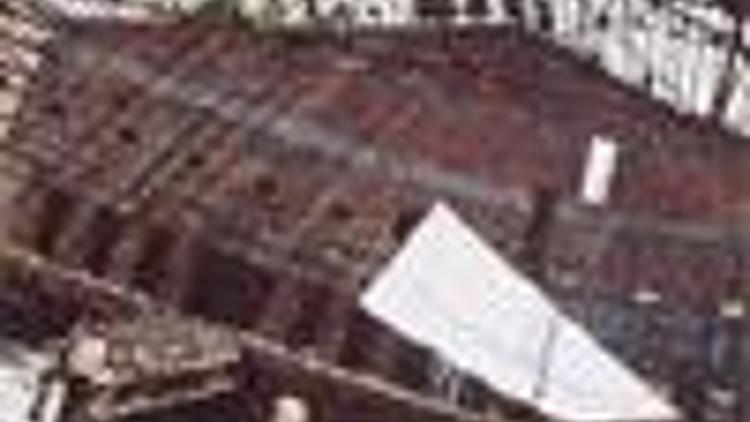Theaters star in own drama
Güncelleme Tarihi:

ISTANBUL - The theather mapping project will mark the theaters of Istanbul from the Tanzimat period, a time of modernization in the mid-19th century of the Ottoman Empire. This academic project would document a rapidly disappearing legacy that the closing of theaters has hurt theater life.
A new project that will map the theaters of Istanbul from the Tanzimat period a time of modernization in the mid-19th century of the Ottoman Empire, began last week as part of Istanbul’s European Capital of Culture projects for 2010.
"A tradition of parting curtains for the future: Istanbul Theatre Map" is one of many performing arts projects that will be an important part of the 2010 cultural capital activities, said Istanbul 2010 European Capital of Culture Agency’s Performance Arts Director Dikmen Gürün.
Gürün said their department had organized a 2008 Theater Festival as part of a inter-universities theater festival, and were planning a Turkey’s Universities Theater Festival in 2009 and a European Universities Theater Festival in 2010. She said the department hoped these programs would become permanent.
On the theater-mapping project, Gürün said the closing of theaters had hurt theater life in the global city of Istanbul and this academic project would document a rapidly disappearing legacy.
She said Istanbul was introduced to western-style theater at the beginning of the 19th century, in that period theatre buildings were constructed and foreign theater companies were invited to perform in them.
Gürün said old theater buildings were so rare, they were almost nonexistent and theaters built during the Republican period had ceased to be functional.
Theater fires
The project is a serious attempt to identify, showcase and protect theaters, a critical element of a city’s culture and art. Gürün said they will comb areas where theater buildings had been concentrated, such as Beyoğlu and its environs, Şişli, Ortaköy, Dolmabahçe, Şehzadebaşı-Direklerarası, including Aksaray and Fatih, on the European side and Kadiköy, Üsküdar on the Anatolian side.
They are going to research the title deeds, registries and archive records of the locations to establish whether there were theaters there and will use Refik Ahmet Sevegil and Metin And’s books to lead them to identify theaters from the time of the Tanzimat period up to today.
Gürün said Istanbul University Literature Faculty’s Theatre Critique and Dramaturgy Department supported the project and had created a team to assist. The project commended two months ago and will be completed in 2010.
The project will combine field work and archival research on theater halls and buildings and comb newspapers to uncover the company’s and artists that performed, a theater’s repertoire and audience profiles that would show the impact of each theater on the city’s culture and arts.
Many of the historic theater buildings were destroyed by fire, Gürün said, and those that remained were difficult to locate, some were in narrow passages and others have been converted into movie theaters.
English translation
The data will be collected into a book that will be translated into English. The book will contain old photographs, pictures of locations, various documents and architectural drawings.
"The cosmopolitan culture of the city will be revealed, particularly when we analyze the Beyoğlu theaters frequented by British, French, and Italian performers on tour and the Direklerarası-Şehzadebaşı theaters which raised Turkish and Armenian artists," Gürün said.
"Today, theaters in many cities around the world are being preserved due to the results of similar research. This project will overcome our own shortcomings in this area. There has been previous research done on theaters before, but ours is deeper and more detailed," she added.
Gürün said they wanted to identify theaters that had shut or were on the verge of closing, make a new generation aware of the value of theater and embrace its past and present, and reinforce the permanence of theater in all its forms. She said she hoped the research would remain a permanent archive that would contribute to the academic and cultural elements of theater life.

